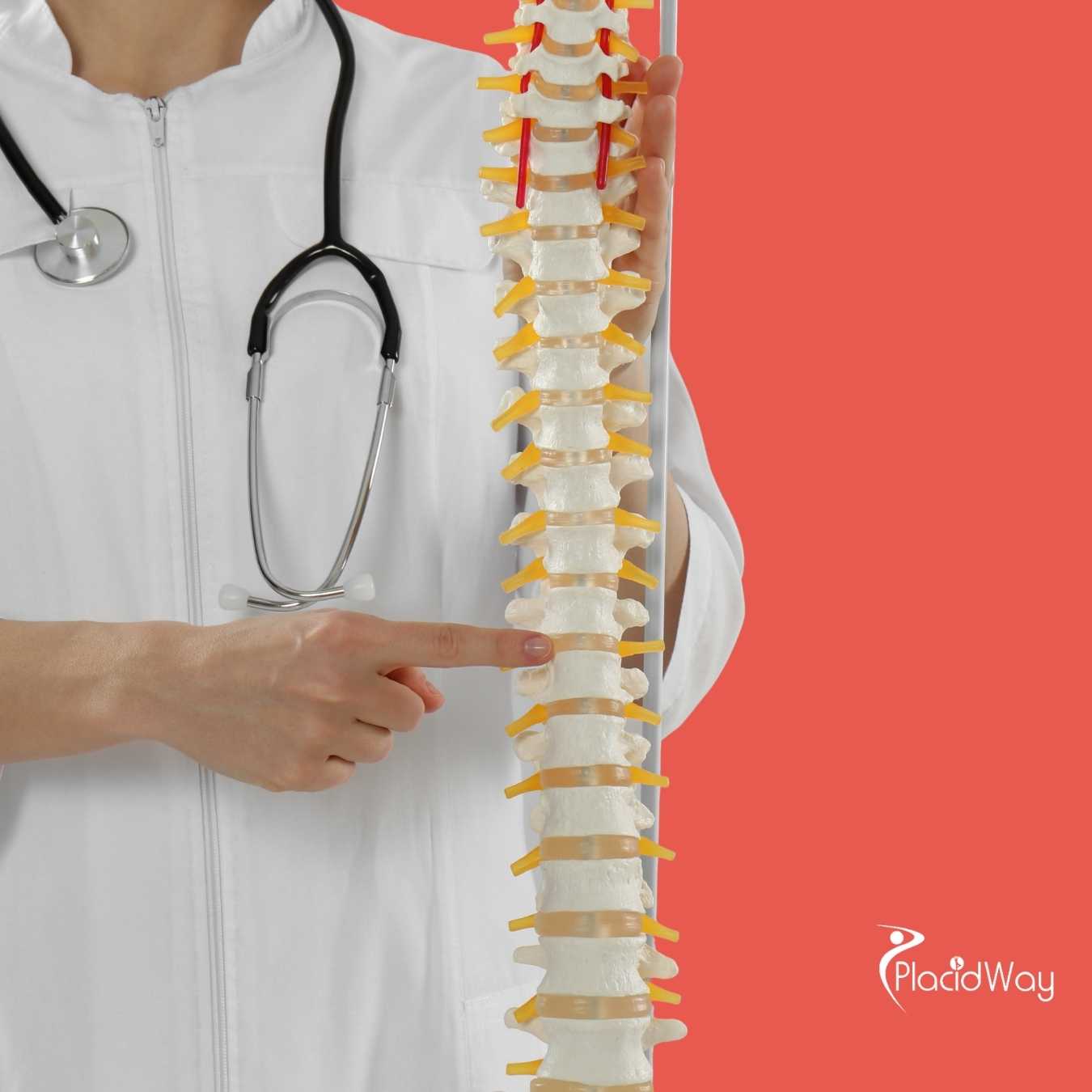Stem Cells and Cartilage Regeneration: What Patients Should Know
Can Stem Cell Therapy Regrow Cartilage?
.png)
Welcome to an exploration of one of the most exciting frontiers in regenerative medicine: stem cell therapy for cartilage repair. If you're struggling with joint pain, limited mobility, or have been diagnosed with conditions like osteoarthritis, you've likely heard whispers of this revolutionary treatment. The idea of your own body being able to mend itself, particularly by rebuilding crucial joint components like cartilage, can sound almost too good to be true. But precisely how effective is it, and can it genuinely lead to the regrowth of this vital tissue?
For many years, severe cartilage damage meant a future of chronic pain, medication, and often, invasive surgeries like joint replacements. Cartilage, which acts as a cushion and shock absorber in our joints, has a very limited capacity for self-repair due to its lack of blood vessels. This is where regenerative medicine steps in, offering new hope. We'll dive deep into whether stem cell therapy can indeed help your body produce new, healthy cartilage, how these therapies work, and what you can expect from this cutting-edge treatment.
Can Stem Cell Therapy Truly Regrow Cartilage?
The ability of stem cell therapy to regrow cartilage is a topic of intense research and considerable promise. While it might not always lead to a perfect, identical replica of original hyaline cartilage, studies and clinical applications demonstrate that stem cells can stimulate the formation of new tissue that functions similarly to cartilage, often referred to as fibrocartilage or a hyaline-like tissue. This process involves the stem cells differentiating into chondrocytes (cartilage-producing cells) and secreting extracellular matrix components essential for cartilage structure.
The goal of these therapies isn't just to alleviate symptoms, but to address the underlying structural damage. By introducing concentrated stem cells directly into the affected joint, these powerful cells can orchestrate a healing response. This includes reducing inflammation, preventing further degradation of existing cartilage, and encouraging the body's innate repair mechanisms to lay down new tissue. Many patients experience substantial improvements in pain, mobility, and overall joint health, suggesting a genuine regenerative effect.
How Do Stem Cells Work to Repair Cartilage?
When concentrated mesenchymal stem cells (MSCs) are introduced into a damaged joint, they perform several crucial functions. Firstly, they possess the remarkable ability to differentiate, or transform, into various cell types, including chondrocytes. These chondrocytes are the specialized cells responsible for producing and maintaining the cartilaginous matrix. By replenishing these essential cells, MSCs contribute directly to the formation of new cartilage-like tissue.
Beyond differentiation, MSCs also play a significant role in modulating the joint environment. They secrete a rich array of bioactive molecules, including anti-inflammatory cytokines, growth factors, and immunomodulatory proteins. These substances help to reduce pain and swelling, creating a more favorable environment for healing. This paracrine effect not only reduces symptomatic discomfort but also protects existing cartilage from further degradation, fostering a comprehensive regenerative process within the joint.
What Types of Cartilage Damage Can Stem Cell Therapy Treat?
Stem cell therapy is being explored and applied for a range of cartilage-related issues. The most common application is for individuals suffering from osteoarthritis, a condition characterized by the gradual wearing away of joint cartilage. In these cases, stem cells aim to slow the progression of the disease, reduce inflammation, and stimulate the growth of new cartilage-like tissue to improve joint function and alleviate chronic pain.
Beyond degenerative conditions, stem cell therapy is also used for acute injuries, such as focal cartilage lesions caused by trauma or sports injuries. These are specific areas where cartilage has been damaged or torn. Additionally, some studies suggest its utility in addressing certain types of meniscus tears, particularly those that are not extensive and can benefit from a regenerative approach. The suitability of the therapy largely depends on the severity and specific type of cartilage damage.
Is Stem Cell Therapy for Cartilage FDA Approved?
The regulatory landscape for stem cell therapies is quite complex and varies significantly by country. In the United States, the Food and Drug Administration (FDA) generally considers stem cell products, particularly those involving more than minimal manipulation of cells, as drugs or biological products. This means they require extensive testing through clinical trials to demonstrate both safety and efficacy before they can be legally marketed for widespread clinical use.
While some stem cell-based products *are* approved for specific uses, such as certain blood cancers, the vast majority of clinics offering "stem cell therapy" for conditions like cartilage damage are operating outside of full FDA approval for that specific indication. Patients considering such treatments should be very diligent in understanding the regulatory status and ensuring they are participating in a legitimate clinical trial or receiving care from a facility that adheres to stringent ethical and safety standards.
What Are the Success Rates of Stem Cell Therapy for Cartilage?
Determining a universal success rate for stem cell therapy for cartilage is challenging due to the varied nature of studies, patient populations, and treatment protocols. However, a growing body of clinical research indicates promising outcomes. Many patients experience a substantial reduction in pain, improved joint mobility, and an enhanced quality of life following treatment. The definition of "success" often revolves around these patient-reported outcomes rather than complete anatomical regeneration.
Factors influencing success include the patient's age, overall health, the extent and duration of cartilage damage, and the specific source and concentration of stem cells used (e.g., bone marrow-derived, adipose-derived). It's important to have realistic expectations; while significant improvement is common, a full return to pre-injury cartilage health is not always guaranteed. Nevertheless, for many, the benefits outweigh the alternative of continued pain or more invasive surgeries.
What Are the Potential Risks and Side Effects of Stem Cell Therapy for Cartilage?
Like any medical procedure, stem cell therapy carries potential risks, though they are generally considered low, especially when using autologous stem cells (cells from the patient's own body). The most common side effects are usually related to the injection site or the site from which the stem cells are harvested (e.g., bone marrow or adipose tissue). These can include temporary pain, tenderness, swelling, or bruising, which typically resolve within a few days.
More serious risks, while rare, can include infection, nerve damage, or allergic reactions to components used in the preparation process. There's also a theoretical, though not widely observed, risk of unwanted tissue growth or immune rejection if allogeneic (donor) cells are used. It's crucial for patients to choose reputable clinics that adhere to strict safety protocols and have experienced medical professionals performing the procedure to minimize these risks.
How Much Does Stem Cell Therapy for Cartilage Typically Cost?
The cost of stem cell therapy for cartilage repair is a significant consideration for many patients, as it often falls outside the scope of traditional insurance coverage. Several factors influence the price, including the reputation and location of the clinic, the source of the stem cells (e.g., bone marrow-derived, adipose-derived, or umbilical cord-derived), the complexity of the procedure, and the number of treatment sessions required. For instance, procedures using bone marrow aspirate concentrate (BMAC) or adipose-derived stem cells (ADSCs) might have different cost structures.
It is important for prospective patients to get a clear, itemized quote that includes all associated costs, such as initial consultations, cell harvesting, processing, injection procedures, and follow-up care. While the upfront investment can be substantial, many patients view it as an investment in improving their quality of life and potentially avoiding more invasive and costly surgeries in the long run. The lack of insurance coverage often prompts patients to explore options like medical tourism.
Where Can I Get Stem Cell Therapy for Cartilage Abroad (Medical Tourism)?
For individuals seeking advanced medical treatments like stem cell therapy for cartilage repair, medical tourism has become a popular option. Countries such as Mexico, Costa Rica, Panama, Germany, and Thailand have developed robust medical tourism sectors, often featuring state-of-the-art clinics specializing in regenerative medicine. These clinics frequently employ highly trained medical professionals, many of whom have international experience and affiliations.
The reasons for choosing to travel abroad for treatment are varied. Often, it's due to the lower cost of procedures compared to home countries, or because certain therapies are not yet widely available or approved in their own country. The regulatory environment in these countries might also be different, allowing for broader access to novel treatments. Patients considering this option should thoroughly research clinics and ensure they meet international standards of care.
What Are the Benefits of Choosing Medical Tourism for Stem Cell Cartilage Treatment?
Choosing medical tourism for stem cell therapy for cartilage can offer several compelling advantages. Primarily, significant cost savings are a major draw, with procedures often being considerably less expensive than in Western countries, even when factoring in travel and accommodation. This financial accessibility makes advanced regenerative treatments viable for a wider range of patients.
Furthermore, medical tourism can provide access to therapies that might not be readily available or fully approved in a patient's home country. Many international clinics are at the forefront of regenerative medicine, offering innovative protocols and technologies. Patients also benefit from reduced waiting times, allowing for more prompt treatment. Additionally, combining treatment with a visit to a new country can offer a more relaxed and private recovery environment, enhancing the overall patient experience.
How Do I Choose a Reputable Clinic for Stem Cell Therapy for Cartilage Overseas?
Selecting a reputable clinic for stem cell therapy abroad requires careful due diligence. Start by looking for clinics that hold international accreditations, such as those from the Joint Commission International (JCI) or other recognized global healthcare bodies. These accreditations signify adherence to stringent quality and safety standards. Research the doctors' credentials, ensuring they are board-certified, have extensive experience in regenerative medicine, and are transparent about their professional background.
Pay close attention to patient testimonials and reviews, but also scrutinize the scientific basis of their treatments. A trustworthy clinic will be upfront about their protocols, the type of stem cells used, expected outcomes, and potential risks. They should offer clear communication channels, provide detailed treatment plans, and outline comprehensive aftercare and follow-up support. Avoid clinics that make exaggerated claims or promise guaranteed results, as this is often a red flag in the evolving field of regenerative medicine.
Ready to explore your options for stem cell therapy for cartilage regrowth or other advanced medical treatments? PlacidWay connects you with world-class clinics and specialized doctors globally, helping you navigate the best medical solutions tailored to your needs. Visit PlacidWay today to discover how medical tourism can provide access to quality healthcare worldwide.


.png)









Share this listing